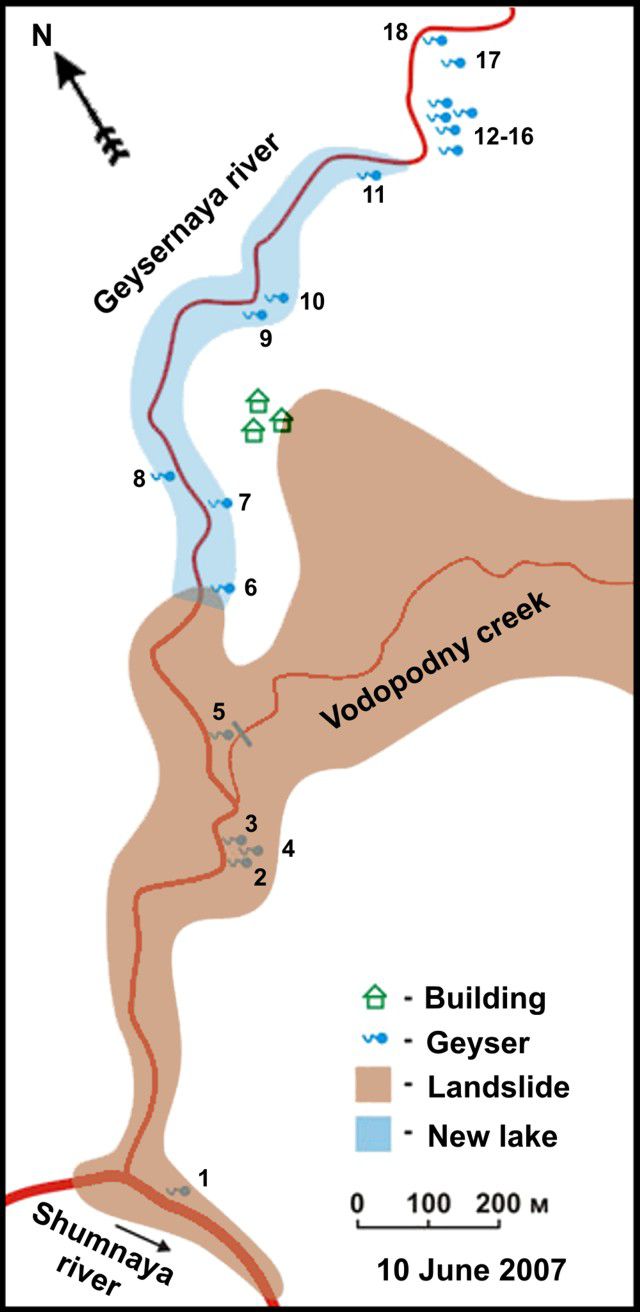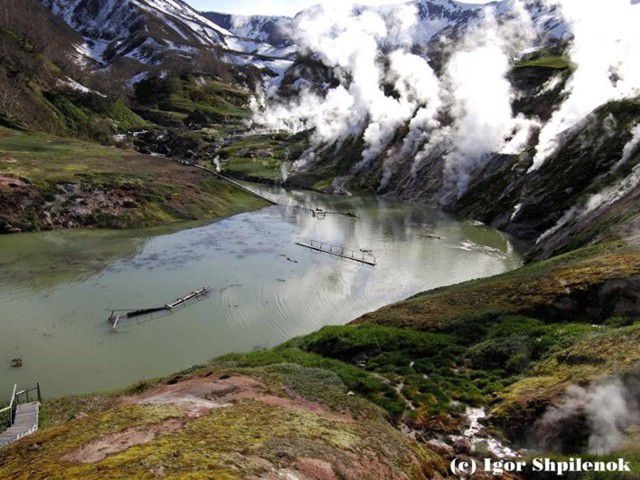Un nouveau geyser, nommé "Prikolny" ("Particulier") est apparu dans la réserve naturelle Kronotsky, dans la caldera d'Uzon
(Kamchatka), à 14 km. de la fameuse "Vallée des geysers".
La caldera d'Uzon :
The Uzon and Geyzernaya calderas, containing Kamchatka's largest geothermal area, form a 7 x 18 km depression that originated during multiple eruptions during the mid-Pleistocene. Widespread
ignimbrite deposits associated with caldera formation have a volume of 20-25 cu km (exclusive of airfall deposits) and cover an area of 1700 sq km. Post-caldera activity was largely Pleistocene in
age and consisted of the extrusion of small silicic lava domes and flows and maar formation. The Lake Dal'ny maar in the NE part of the 9 x 12 km western caldera, Uzon, is early Holocene in age.
The extensive high-temperature hydrothermal system includes the many hot springs, mudpots, and geysers of the Valley of Geysers, a 4-km-long canyon on the east margin of the depression. A phreatic
explosion occurred in 1986 in the western part of the Vostochny thermal field, creating a new 14-m-wide crater. - source : global volcanism program.
 "Le geyser Prikolny serait à l'origine une source chaude; le processus de transformation d'une source chaude en geyser est
scientifiquement inconnue" - V.Droznin, senior researcher
"Le geyser Prikolny serait à l'origine une source chaude; le processus de transformation d'une source chaude en geyser est
scientifiquement inconnue" - V.Droznin, senior researcher.
Ce geyser présente des éruptions toutes les 6 à 20 minutes; il est unique dans le sens où il réutillise sans arrêt la même eau.
L'eau qui jaillit à 5 m. de hauteur retombe dans la cavité pour en ressortir régulièrement.

Un champ étendu de geysers fut découvert en 1941, au Kamchatka, près du volcan Kikhpinich. Cette vallée des geysers contait une centaine de geysers avant qu'un glissement de terrain n'en recouvre
une partie en juin 2007, bloquant le cours de la Geysernaya river.
Carte du G.V.P. - V. & A. Leonov.
Il n'y a que quatre grands parcs de geysers au monde: en Islande, aux Etats-Unis, en Nouvelle-Zélande et au Kamchatka.
 photo prise après le glissement de terrain de juin 2007.
photo prise après le glissement de terrain de juin 2007.
sources :
- WWF - Russie - documents Igor Shpilenok - 07 juillet 2009
- article du National Geographic.


 photo prise après le glissement de terrain de juin 2007.
photo prise après le glissement de terrain de juin 2007.

